Germania Inferior (1)
Q152136Germania inferior: small province of the Roman empire, situated along the Lower Rhine. Its capital was Cologne.
Roman Conquest
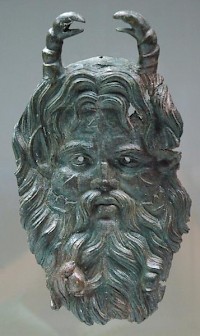
Julius Caesar was the first Roman general to invade the Low Countries. In the summer of 57 BCE, he defeated the Nervians (text) and - proceeding along an ancient road - the Aduatuci in the valley of the Meuse (more). In the spring of 55, he repelled the Usipetes and Tencteri, two tribes that had invaded the region (text). A couple of months later, he bridged the Rhine and invaded the country near the river Ruhr. One lasting result was a coalition with the Ubians, a tribe on the east bank of the Rhine.
Everything seemed under control, but in the winter of 54/53, there was a setback, when king Ambiorix of the Eburones was able to annihilate a Roman legion. Caesar's rapid reaction was extremely violent: within 300 days, the Eburones were exterminated. Ambiorix' allies, the Menapians, were hunted down. Their 7,000 warriors were no match for the 18,000 legionaries. After these actions, the Meuse-Rhine area was as quiet as a graveyard.
After this war, the Low Countries disappear from our sources, except for a brief remark by Varro, who tells that there are no olive trees and vines along the Lower Rhine, and describes how the land is marled and how salt is extracted from burned wood.note

In 39 and 38, Marcus Vipsanius Agrippa was governor of Gaul, and fought a war on the east bank of the Rhine on behalf of the Ubians against the Suebians, a Germanic tribe that was notorious for its aggressiveness.
After the campaign, Agrippa resettled the Ubians on the west bank. This was easy, because after the wars of Caesar, the area was almost empty. The settlers remained loyal allies of the Romans and built a town that was called Ara Ubiorum, "the altar of the Ubians", modern Cologne. A military road connected this city to Trier, Langres, and Lyon, and the presence of Italian wine amphoras in towns along the new road suggests that merchants followed in the footsteps of the soldiers.
At the same time, there was a quarrel among the Chatti, another tribe living on the east bank of the Rhine, and also threatened by the Suebians. One faction seems to have been pro-Roman, another pro-Suebian. This second group was more powerful, and the pro-Roman Chatti were expelled. Agrippa settled them on the island between the Lower Rhine and the Lower Meuse. They accepted the name of the native population, Batavians, "people of the fertile wetlands".
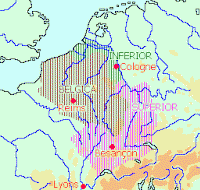
In 27, the emperor Augustus divided Rome's territories north of the Alps into three provinces: Gallia Aquitania, Gallia Lugdunensis, and Gallia Belgica. This last province was more or less identical to the Rhine frontier and its economic hinterland - as defined by the rivers Scheldt, Meuse, and Moselle. Its capital was Reims.
Ten years later, the governor of Belgica, Marcus Lollius, was defeated by the Sugambri, a tribe that lived on the east bank of the Rhine. The defeat was humiliating, as the Fifth legion Alaudae lost its eagle standard, the ultimate disgrace to a Roman army unit.Augustus understood that the Rhine frontier was still unstable and sent his adoptive sons Drusus and Tiberius to the north, where they had to pacify the tribes that were living between the Alps, Rhine and Elbe.
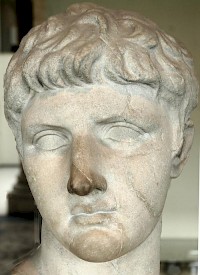
In the years 16-13, they reorganized the strip of land along the Rhine, which now became a military zone, where the army of Germania Inferior (which included the legions XVII and XVIII) defended the Roman empire against invaders from Germania. Until then, the legions had been stationed in several towns in Gallia Belgica; from now on, they guarded the Rhine. They had served as an occupation force, now they protected a secure province of the Roman empire.
There were two army groups: the army of the Middle Rhine or Germania Superior (I Germanica, V Alaudae and XIX), and the army of the Lower Rhine or Germania Inferior. Although the commanders were officially subordinate to the governor of Gallia Belgica, they were in fact autonomous. (In 83 or 84 CE, the emperor Domitian changed the two military zones into independent provinces.)
In the north of Germania Inferior, a very large army base was built near Nijmegen, the capital of the Batavians. Another camp was at Xanten. These places, situated on the banks of the river Waal and easily accessible for food transports, were to be the starting point of the conquest of Germania. Drusus also ordered the construction of canals and a dam, which made it easier to transport the armies to the north and east by water. At Cologne, the Romans dedicated a large shrine to the war god Mars, who was to protect the armies during the next years. (In this temple, the sword of Caesar was kept as a relic.)
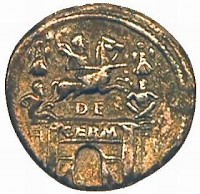
In 12, the Romans were ready to strike. The Sugambri knew that they were doomed and decided upon a preemptive strike, but Drusus defeated them twice: near the Rhine and in their homeland. Returning to the Rhine, Drusus' legions were transported on ships to Nijmegen and the North Sea. Here, the Frisians and Chauci were forced into surrender.
Next year, Drusus invaded the country east of the Rhine for a second time. He crossed the country of the Sugambri, proceeded along the river Lippe, reached the Cherusci, and would have crossed the river Weser if the omens had been better. On his return, he founded a large military base, which has been discovered by archaeologists near the German town Oberaden. The site can dendrochronologically be dated to the autumn of 11 BCE. Three legions used it as their winter quarters. A similar fort was built near Rödgen, 190 kilometers to the south.
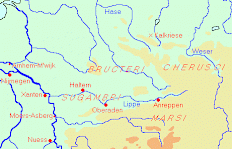
The north of Germania being pacified, Drusus celebrated a minor triumph (an ovatio). Next year, the army of Germania Superior proceeded from Mainz on the Middle Rhine to the Chatti. This campaign was repeated in 9. One tribe, the Marcomanni, was so impressed, that its king Maroboduus decided to migrate with his people to Bohemia, far away from the Roman arms. In the summer, Drusus reached the river Elbe. (In 2004, a fort belonging to this campaign was discovered at Hedemünden, where the Werra and Fulda unite.) However, on his way back home, he fell from his horse and died. The conqueror of Germania was twenty-nine years old.
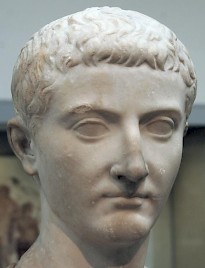
He was succeeded by his brother Tiberius, a capable general who understood that Germania was too poor to be a valuable part of the empire. On the other hand, the armies could not be recalled after the death of Drusus: that would look as if the Romans had been defeated. In the years 9 and 8, Tiberius attacked the Sugambri and deported 40,000 of them to the west bank of the Rhine. They became known as the Cugerni and lived in farms near Xanten, where Tiberius stationed the Eighteenth legion. Nijmegen was evacuated. The soldiers of Oberaden were transferred to a new and better camp at Haltern, where the presence of the Nineteenth legion is attested. Perhaps, the Seventeenth was there too.
Although the Roman possessions on the east bank of the Rhine were not clearly defined, the region was tranquil, and remained so for the next decade and a half. At the beginning of our era, a general named Lucius Domitius Ahenobarbus even crossed the Elbe, and in 4 CE, Augustus decided that Germania had to become a normal province. Again, Tiberius was sent to the north. The army of Germania Inferior marched from the mouth of the Rhine through the inland to the sources of the Lippe, where a camp was built at Anreppen. Next year, the navy brought the legions to the mouth of the Elbe, and Tiberius marched along the river until he had reached the area of modern Dresden. (We have an eyewitness-account in the Roman History of Velleius Paterculus.)
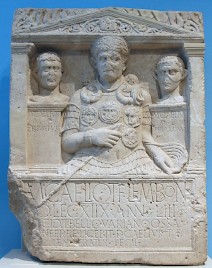
The only part between the Elbe, Rhine and Danube that remained unconquered was the kingdom of Maroboduus, the leader of the Marcomanni. In the winter of 5/6, the army of Germania Superior marched to the east along the river Main and built a large base at Marktbreit. From here, two legions could attack Maroboduus; at the same time, Tiberius would march to the north from the Danube, where eight legions were gathered at Bratislava. It was to be the most grandiose operation that was ever conducted by a Roman army, but a rebellion in Pannonia obstructed its execution. Tiberius was occupied for three years until he had suppressed the insurrection.
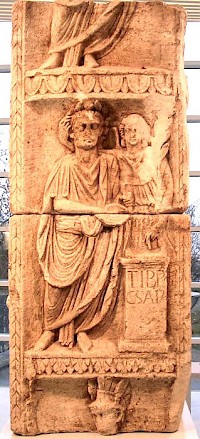
Meanwhile, the army of Germania Inferior was commanded by Publius Quinctilius Varus, one of the most important senators of his age and a personal friend of Augustus. He had to make a normal province of the country between the Lower Rhine and Lower Elbe, and had some success. However he was defeated by the Cheruscan leader Arminius in the battle in the Teutoburg Forest (September 9 CE). The Seventeenth, Eighteenth and Nineteenth legions were annihilated, and the Sixteenth legion Gallica and I Germanica moved to the north to help V Alaudae secure the Rhine frontier.
During the next three years, Tiberius was active on the east bank of the Rhine (he had only just suppressed the Pannonian revolt). Until then, about six legions had guarded the frontier; from now on, there were eight. The army of Germania Superior consisted of II Augusta, XIII Gemina, XIV Gemina, and XVI Gallica; I Germanica, V Alaudae, XX Valeria Victrix, and XXI Rapax were stationed in Germania Inferior. Diplomacy secured the alliance between the Romans and the Frisians and Chauci, but Arminius was able to create a federation of tribes. In 9, 10, and 11, Tiberius invaded Arminius' territory, but he did not want to reconquer the country between Rhine and Elbe: the Romans merely wanted to avenge themselves. It is likely that the construction of the Roman fort at Vechten (ancient Fectio) is connected to this offensive.
In 12, Tiberius decided that it was enough, and accepted that the Rhine was the border of the Roman empire. He understood the Germans: left to their own, the federation of Arminius would soon disintegrate.
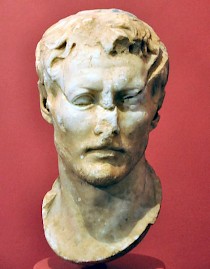
Two years later, Tiberius succeeded Augustus and became emperor. General Germanicus (a son of Drusus) now commanded the army of Germania Inferior. In 14, 15, and 16, he invaded the country between the Rhine and Elbe again, and was able to defeat Arminius in battle. The fort at Velsen was built as a naval base to support the attack. However, the renewed Roman attacks only served to strengthen Arminius' position, and Tiberius recalled his nephew. A few years later, the Germanic leader was assassinated.
From this moment on, Germania Inferior was only a small province: a small stretch of land to the southwest of the Lower Rhine, with the country of the Frisians and Chauci as an appendix. In 28, these tribes revolted, and although the Fifth legion Alaudae was able to overcome the rebels (text), Tiberius gave up all territories on the other side of the Rhine. Germania Inferior was to remain an incomplete province.